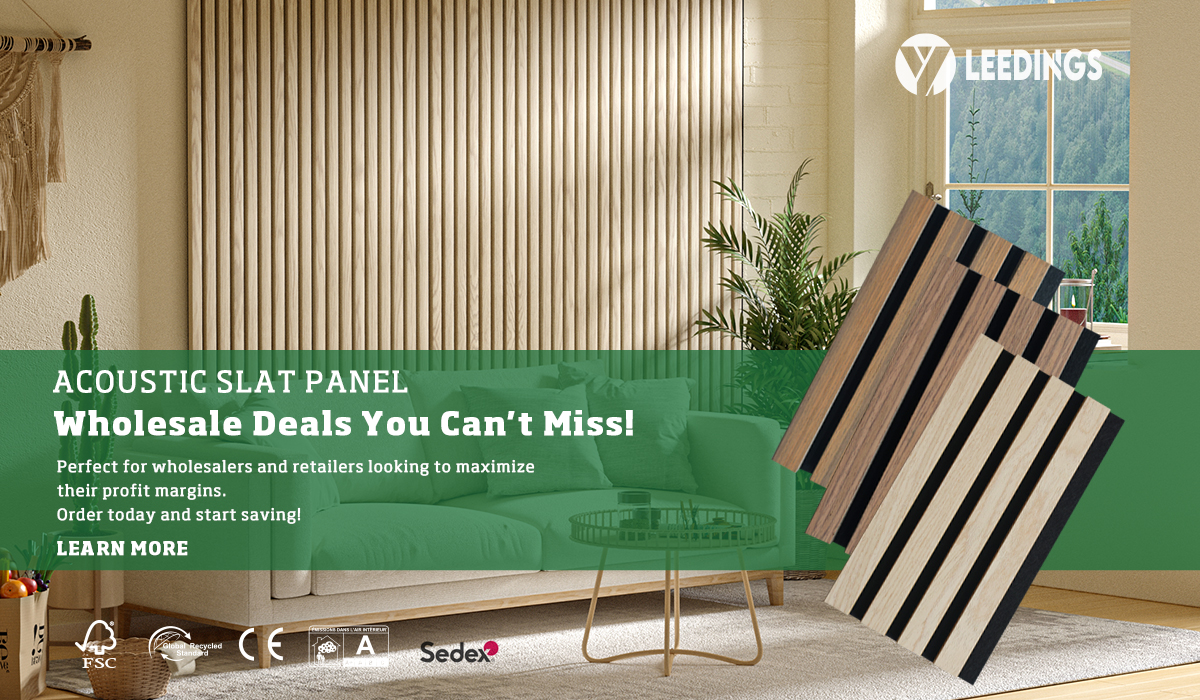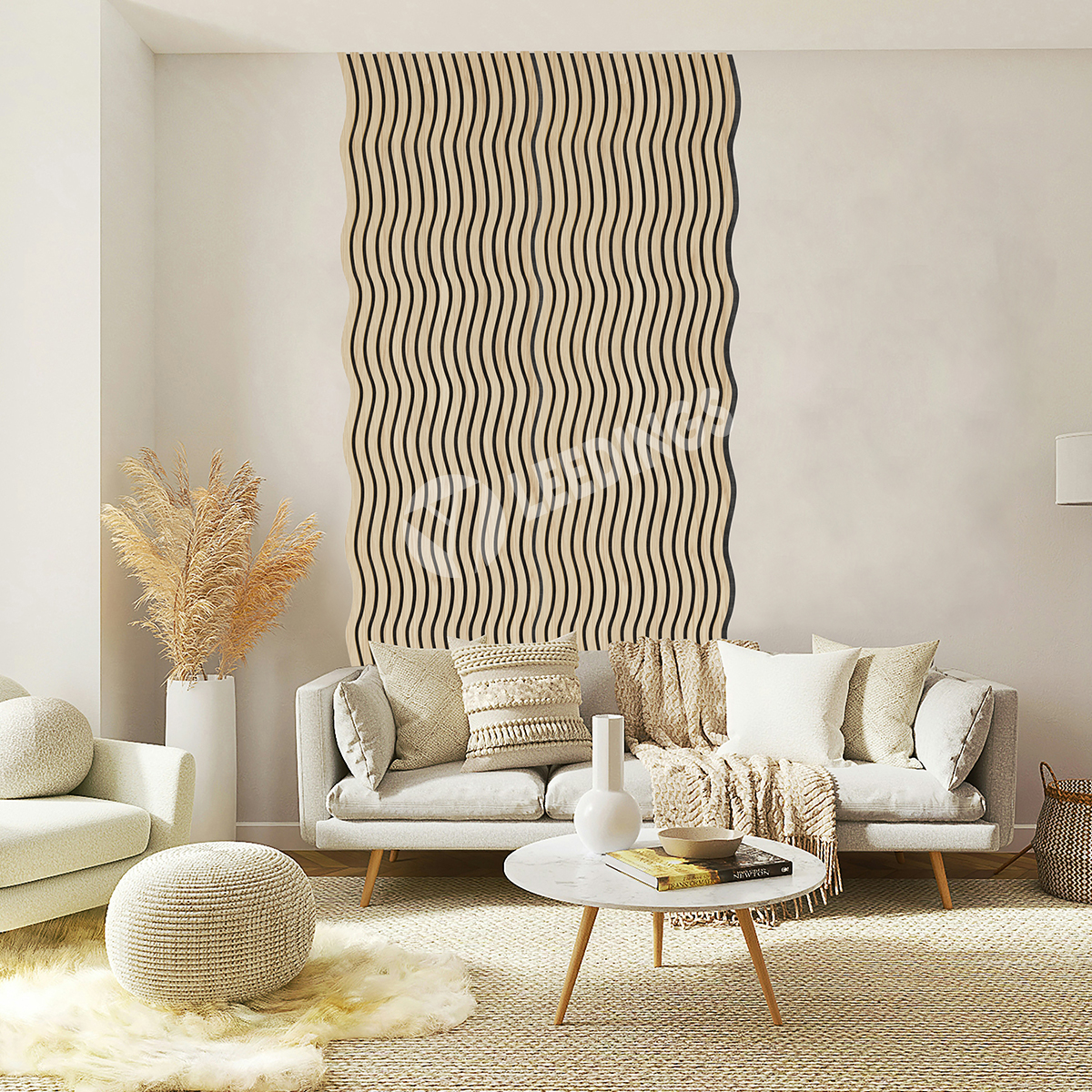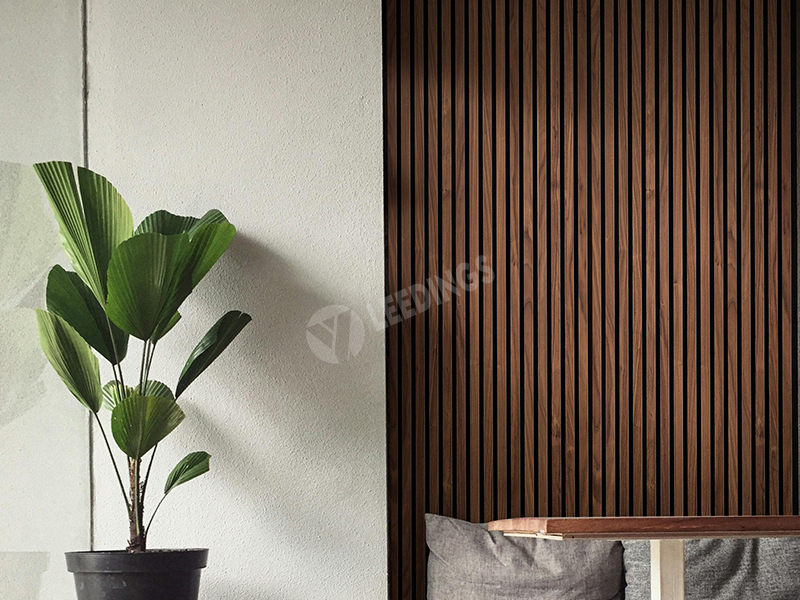
Introduction
As global awareness of environmental protection continues to rise, interior designers, architects, and homeowners are looking for materials that provide both visual beauty and sustainability. Akupanels—wood slat acoustic panels made with PET felt backing—have become one of the most eco-friendly design choices on the market.
Their unique combination of recycled polyester felt, responsibly sourced wood, and low-impact production aligns with the sustainability goals of modern construction.
This article explores how Akupanels contribute to greener, healthier, and more responsible interiors.
1. Recycled PET Felt: Giving Plastic a Second Life
The acoustic felt used in Akupanels is typically made from recycled PET fibers, sourced from post-consumer plastic bottles.
Why This Matters:
Reduces plastic waste: Every square meter of PET felt repurposes multiple bottles that would otherwise enter landfills or oceans.
Energy-efficient production: Producing recycled PET requires significantly less energy than creating virgin polyester.
Excellent acoustic performance: The porous fiber structure helps absorb mid-to-high frequency noise.
Non-toxic & safe: The felt is usually formaldehyde-free, odorless, and compliant with international indoor air quality standards.
Sustainability Impact:
Using recycled PET transforms waste into valuable building material, supporting circular economy principles.

2. FSC-Certified Wood Slats: Responsible Forest Management
The wooden slats on Akupanels often use FSC-certified wood, ensuring the timber comes from responsibly managed forests.
Benefits of FSC Wood:
Promotes sustainable forestry and long-term biodiversity.
Ensures ethical sourcing, including fair labor and safe working conditions.
Protects global ecosystems and prevents illegal or destructive logging.
Guarantees traceability from forest to finished product.
Common Sustainable Veneer Options:
Oak
Walnut
Ash
Teak
Bamboo (fast-growing and highly renewable)
Using FSC wood adds both natural beauty and environmental responsibility to any project.
3. Low-Emission, Safe Materials for Healthier Indoor Spaces
Sustainability is not only about environmental benefits—it also means creating healthier interiors.
Akupanels Commonly Feature:
Zero- or low-formaldehyde adhesives
Low-VOC finishes
Non-toxic PET felt that meets EN13501 or equivalent safety standards
Odorless materials, ideal for homes, schools, offices, and public buildings
These features support certifications such as:
LEED
WELL Building Standard
GreenGuard
BREEAM
Why It Matters:
Indoor air quality has a direct impact on occupants’ health—especially in enclosed environments like offices, classrooms, and residential spaces.

4. Energy-Efficient Manufacturing Processes
Many Akupanel manufacturers have improved production processes to reduce environmental impact.
Sustainable Manufacturing Practices Include:
Using solar power or energy-efficient machinery
Reducing heat and water consumption during pressing and lamination
Recycling production waste (wood scraps, PET offcuts)
Implementing cleaner transportation and packaging systems
These practices help lower the product’s total carbon footprint while maintaining high aesthetic and acoustic quality.
5. Longevity and Reusability: Reducing Waste Over Time
Another overlooked aspect of sustainability is product lifespan.
Akupanels Are Built for Durability:
Resistant to fading and cracking
Easy to maintain and clean
Suitable for reinstallation when spaces are redesigned
Long-lasting products reduce material turnover and waste generation, supporting a more environmentally responsible approach to interior decoration.

Conclusion: Sustainable Design Without Compromise
Akupanels prove that modern interior design can be both beautiful and environmentally conscious.
With recycled PET felt, FSC-certified wood, safe low-emission materials, and eco-friendly manufacturing, they are a smart choice for architects and homeowners seeking sustainable solutions.
Whether for a home remodel, office renovation, or commercial project, Akupanels offer a responsible path to stylish, acoustically comfortable, and eco-friendly interiors.

